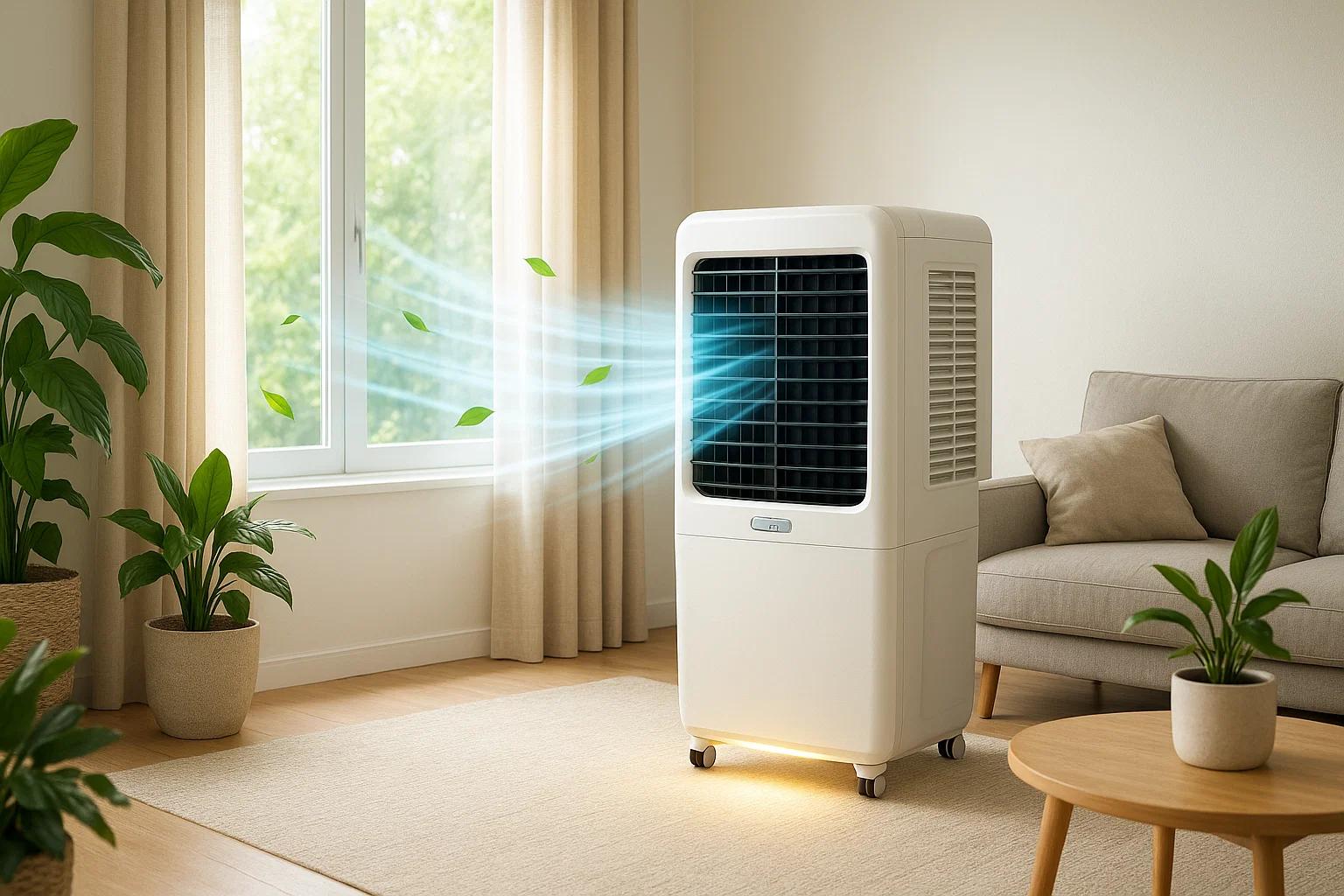
When summer hits hard, the first thing most people turn to for relief is a cooling solution. While air conditioners may seem like the obvious choice, air coolers continue to be a cost-effective and eco-friendly alternative, especially in regions like Rajasthan. But not all air coolers perform the same in every climate. Understanding how air coolers respond to dry air vs. humid air is key to choosing the right product for your needs.
Understanding Dry and Humid Air
Before comparing cooler performance, it’s important to understand the difference between dry and humid air.
🔸 Dry Air
Dry air has low humidity levels, usually below 30%. It's commonly found in arid and semi-arid regions like Rajasthan. Because the air lacks moisture, it allows for faster evaporation, which is essential for air coolers to work effectively.
🔸 Humid Air
Humid air, on the other hand, is filled with moisture. Coastal and tropical areas often experience humidity levels above 60%. Since this air is already saturated with water, it significantly slows down the evaporation process, making evaporative cooling less efficient.
How Do Air Coolers Work?
Air coolers rely on the principle of evaporative cooling. They pull in warm air from the environment, pass it through water-saturated cooling pads, and release cooler air into the room. The process depends entirely on evaporation—the drier the air, the better the cooling.
Performance of Air Coolers in Different Climates
✅ In Dry Climates
Ideal Conditions: Dry air allows water to evaporate quickly, resulting in efficient and powerful cooling.
Better Air Quality: Coolers can add moisture to dry air, preventing dry skin and respiratory issues.
Energy Efficient: Coolers consume less power than air conditioners, making them perfect for regions like Udaipur.
⚠️ In Humid Climates
Reduced Cooling Efficiency: Since the air is already saturated, the evaporation process is slower.
Feeling of Stickiness: Instead of refreshing air, users may experience a muggy and uncomfortable environment.
Needs Ventilation: To use coolers effectively in humid areas, proper cross-ventilation is crucial to circulate air and reduce moisture buildup.
Choosing the Right Cooler Based on Climate
🟢 For Dry Regions
Choose desert coolers or fiber body coolers with a large water tank.
Look for high airflow capacity to cool large spaces effectively.
Siddham Coolers, based in Udaipur, manufactures fiber and plastic coolers that are ideal for dry conditions.
🔴 For Humid Regions
Consider air coolers with humidity control.
Ensure windows or doors remain open for proper airflow.
In extremely humid climates, air conditioners or dehumidifiers may be more effective.
Tips to Maximize Cooler Efficiency
Use the cooler in well-ventilated rooms.
Keep cooling pads clean and free of scale or dust.
Refill the water tank with fresh, clean water regularly.
Use ice water for an extra boost of cooling in dry areas.
Conclusion
Air coolers can be an excellent and affordable way to stay cool during summer—but only when used in the right conditions. In dry regions like Rajasthan, they perform exceptionally well, providing refreshing, energy-efficient comfort. However, in humid climates, their performance may vary and require additional strategies for better results.
🌬️ Stay Cool with Siddham Coolers
If you live in a dry region like Udaipur and are looking for a durable, high-performance cooler, Siddham Coolers has the perfect solution for you. As a leading manufacturer of fiber and plastic air coolers in Rajasthan, Siddham Coolers is committed to delivering innovative, long-lasting cooling solutions for homes and offices.
Beat the heat—choose comfort with Siddham Coolers today!
👉 Visit Siddham Coolers








Write a comment ...